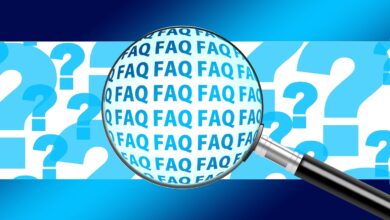How to Build an Advanced Agentic Retrieval-Augmented Generation (RAG) System with Dynamic Strategy and Smart Retrieval?

How to Build an Advanced Agentic Retrieval-Augmented Generation (RAG) System with Dynamic Strategy and Smart Retrieval?
Estimated reading time: 6 minutes
- Agentic RAG: This advanced system transcends traditional RAG by intelligently deciding when and how to retrieve information, acting like a human expert rather than a static process.
- Dynamic Strategy Selection: An embedded “agent” evaluates query intent and dynamically selects optimal retrieval strategies, which can include semantic search, multi-query generation, or temporal filtering, ensuring highly relevant context.
- Core Components: Building an Agentic RAG system involves foundational elements such as a MockLLM for decision simulation, a RetrievalStrategy enumeration, a flexible Document dataclass, robust embedding models (e.g., “all-MiniLM-L6-v2”), and efficient indexing with FAISS.
- Pre-retrieval Intelligence: A significant differentiator is the agent’s ability to assess if a user query genuinely necessitates external information before any retrieval takes place, leading to targeted and resource-efficient searches.
- Practical Application: This architecture greatly enhances real-world applications like sophisticated customer support chatbots, delivering precise, contextually aware, and resource-efficient responses tailored to specific user needs, thereby improving satisfaction and efficiency.
- How to Build an Advanced Agentic Retrieval-Augmented Generation (RAG) System with Dynamic Strategy and Smart Retrieval?
- The Evolution of RAG: Beyond Basic Retrieval
- Designing and Implementing the Agentic Core
- Actionable Steps for Building Your Advanced Agentic RAG
- Real-World Application: Enhancing Customer Support
- Unleashing the Potential: Demonstration and Conclusion
- Frequently Asked Questions
In the rapidly evolving landscape of artificial intelligence, Large Language Models (LLMs) have demonstrated incredible capabilities in generating human-like text. However, their knowledge is often limited to their training data, leading to issues like factual inaccuracies or outdated information. This is where Retrieval-Augmented Generation (RAG) steps in, empowering LLMs by fetching relevant external information before generating a response.
While traditional RAG systems simply retrieve documents based on a query, the next frontier involves making these systems “agentic.” An agentic RAG system doesn’t just retrieve; it thinks, strategizes, and adapts. It intelligently decides if retrieval is even necessary, chooses the optimal strategy for finding information, and then synthesizes a contextually rich response. This elevates the RAG pipeline from a static process to a dynamic, intelligent workflow, offering unparalleled accuracy and relevance.
The Evolution of RAG: Beyond Basic Retrieval
The standard RAG pipeline operates on a straightforward principle: a user query prompts a search across a knowledge base, relevant documents are retrieved, and these documents are then fed to an LLM as context for generating an answer. While effective, this approach can be somewhat rigid. It often retrieves documents even when a direct answer might suffice, or it uses a generic retrieval method when a more specialized approach (like looking for recent data or comparing multiple entities) would be more efficient.
Agentic RAG addresses these limitations by embedding an “agent” – an intelligent decision-making layer – into the pipeline. This agent acts as a conductor, guiding the flow of information with foresight and purpose. Instead of a fixed process, the agent evaluates the query’s intent and dynamically adjusts its strategy, much like a human expert would. This strategic intervention leads to more precise, contextually aware, and resource-efficient responses.
The core concept of this advanced architecture is beautifully encapsulated in its design:
“In this tutorial, we walk through the implementation of an Agentic Retrieval-Augmented Generation (RAG) system. We design it so that the agent does more than just retrieve documents; it actively decides when retrieval is needed, selects the best retrieval strategy, and synthesizes responses with contextual awareness. By combining embeddings, FAISS indexing, and a mock LLM, we create a practical demonstration of how agentic decision-making can elevate the standard RAG pipeline into something more adaptive and intelligent. Check out the FULL CODES here.”
Designing and Implementing the Agentic Core
Building an agentic RAG system begins with establishing foundational components that facilitate intelligent decision-making and efficient information handling. This involves defining a MockLLM to simulate the agent’s thought process, establishing an enumeration for various RetrievalStrategy options, and designing a flexible Document dataclass to structure our knowledge base effectively.
“We set up the foundation of our Agentic RAG system. We define a mock LLM to simulate decision-making, create a retrieval strategy enum, and design a Document dataclass so we can structure and manage our knowledge base efficiently. Check out the FULL CODES here.”
The backbone of any robust RAG system is its ability to swiftly and accurately access vast amounts of information. Our agentic system leverages a powerful embedding model (like “all-MiniLM-L6-v2”) to convert raw document content into numerical vectors. These high-dimensional representations are then indexed using FAISS (Facebook AI Similarity Search), a library specifically engineered for rapid similarity searches across large datasets. This sophisticated setup forms a responsive and expansive knowledge base, ready for semantic querying.
“We build the core of our Agentic RAG system. We initialize the embedding model, set up the FAISS index, and add documents by encoding their contents into vectors, enabling fast and accurate semantic retrieval from our knowledge base. Check out the FULL CODES here.”
A key differentiator of agentic RAG is its capacity for self-assessment and strategic planning before any retrieval takes place. The agent first determines if a user query genuinely necessitates external information. If so, it then dynamically selects the most appropriate retrieval strategy, choosing from options like standard semantic search, multi-query generation for comparative analyses, or temporal filtering for recent data. This pre-retrieval intelligence ensures that searches are always targeted and relevant, minimizing unnecessary processing while maximizing the quality of retrieved context.
“We give our agent the ability to think before it fetches. We first determine if a query truly requires retrieval, then we select the most suitable strategy: semantic, multi-query, temporal, or hybrid. This allows us to target the correct context with clear, printed reasoning for each step. Check out the FULL CODES here.”
Once a strategy is chosen, the system executes a precise retrieval. This involves performing semantic searches, potentially branching into specialized approaches like multi-query generation or temporal re-ranking to fine-tune results. Crucially, duplicate documents are identified and removed, ensuring a streamlined set of relevant information. Finally, a comprehensive and focused answer is synthesized, leveraging the LLM’s generative power grounded firmly in the fetched context. This process is designed for efficiency, transparency, and tight alignment with the query’s intent.
“We implement how we actually fetch and use knowledge. We perform semantic search, branch into multi-query or temporal re-ranking when needed, deduplicate results, and then synthesize a focused answer from the retrieved context. In doing so, we maintain efficient, transparent, and tightly aligned retrieval. Check out the FULL CODES here.”
The entire advanced RAG pipeline is orchestrated through a central query method, bringing all these intelligent components into a cohesive workflow. When a user submits a query, this method first engages the agent’s decision-making process to assess the need for retrieval, then guides the selection of the optimal strategy. It manages the fetching of documents according to that strategy and culminates in the synthesis of a definitive response. The transparency of this integrated system, with retrieved context clearly displayed, enhances user trust and makes the entire interaction feel more agentic and explainable.
“We bring all the parts together into a single pipeline. When we run a query, we first determine if retrieval is necessary, then select the appropriate strategy, fetch documents accordingly, and finally synthesize a response while also displaying the retrieved context for transparency. This makes the system feel more agentic and explainable. Check out the FULL CODES here.”
Actionable Steps for Building Your Advanced Agentic RAG
Implementing such a sophisticated system might seem daunting, but by breaking it down, you can systematically build your own advanced RAG solution:
-
Define Your Agent’s Decision Logic
Start by outlining the rules and conditions under which your agent will decide whether to retrieve information and which strategy to employ. This involves crafting prompts for your LLM (or mock LLM) that clearly ask for a decision (e.g., “should I retrieve?”). Also, define the different retrieval strategies (semantic, temporal, multi-query, etc.) and the criteria for choosing each based on query characteristics. This foundational logic is what makes your RAG system truly agentic.
-
Curate and Index Your Knowledge Base with Rich Metadata
Gather relevant documents and ensure they are well-structured. For advanced strategies like temporal retrieval or filtering, rich metadata (e.g., publication dates, topics, authors) is crucial. Use an embedding model to convert document content into vectors and then index them efficiently using a tool like FAISS. The quality and organization of your knowledge base directly impact the effectiveness and versatility of your retrieval.
-
Experiment with Diverse Retrieval Strategies
Don’t stick to a single approach. Implement and test various retrieval strategies to see which ones perform best for different types of queries in your domain. This includes standard semantic search, multi-query generation (e.g., breaking down a comparison query into multiple sub-queries), and temporal filtering (prioritizing recent documents). Continuously iterate and refine your strategies based on rigorous evaluation metrics and domain-specific needs.
Real-World Application: Enhancing Customer Support
Consider a sophisticated customer support chatbot for an electronics company. A standard RAG system might always search for product manuals, regardless of the query. An agentic RAG system, however, operates differently:
- If a customer asks, “What are the return policies?”, the agent might decide “NO_RETRIEVE” because this is general information the LLM can answer directly from its pre-trained knowledge or a short, easily accessible internal FAQ.
- If the query is, “How do I troubleshoot error code E-205 on the new Model XTV television?”, the agent identifies the need for specific, technical information and decides “RETRIEVE.” It then analyzes the keywords (“new Model XTV”, “error code”) and selects a “TEMPORAL” strategy to prioritize the latest product documentation for that model, potentially cross-referencing with a “MULTI-QUERY” strategy to find common issues and solutions. This dynamic approach ensures the customer receives the most accurate and up-to-date troubleshooting steps, significantly improving support efficiency and satisfaction.
Unleashing the Potential: Demonstration and Conclusion
To practically illustrate the power of this system, a sample knowledge base comprising AI-related documents is created. This allows us to observe the Agentic RAG system in action, processing diverse queries and showcasing its adaptive behaviors, including when to directly answer and when to retrieve, and how it intelligently compares information.
“We wrap everything into a runnable demo. We create a small knowledge base of AI-related documents, initialize the Agentic RAG system, and run sample queries that highlight various behaviors, including retrieval, direct answering, and comparison. This final block ties the whole tutorial together and showcases the agent’s reasoning in action.”
The demonstration clearly highlights several key features:
- Agent-driven retrieval decisions
- Dynamic strategy selection
- Multi-modal retrieval approaches (semantic, temporal, multi-query, hybrid)
- Transparent reasoning process
In conclusion, we see how agent-driven retrieval decisions, dynamic strategy selection, and transparent reasoning come together to form an advanced Agentic RAG workflow. We now have a working system that highlights the potential of adding agency to RAG, making information retrieval smarter, more targeted, and more human-like in its adaptability. This foundation allows us to extend the system with real LLMs, larger knowledge bases, and more sophisticated strategies in future iterations.
Check out the FULL CODES here. Feel free to check out our GitHub Page for Tutorials, Codes and Notebooks. Also, feel free to follow us on Twitter and don’t forget to join our 100k+ ML SubReddit and Subscribe to our Newsletter.
The post How to Build an Advanced Agentic Retrieval-Augmented Generation (RAG) System with Dynamic Strategy and Smart Retrieval? appeared first on MarkTechPost.
Frequently Asked Questions
What is the main difference between traditional RAG and Agentic RAG?
Traditional RAG systems passively retrieve documents based on a query and feed them to an LLM. In contrast, Agentic RAG systems incorporate an intelligent “agent” that actively decides whether retrieval is necessary, chooses the optimal retrieval strategy, and then synthesizes a contextually rich response. This makes the system dynamic, adaptive, and more akin to a human expert’s decision-making process.
Why is dynamic strategy selection important in an Agentic RAG system?
Dynamic strategy selection allows the Agentic RAG system to adapt its approach based on the specific intent and characteristics of a user’s query. Instead of a one-size-fits-all retrieval method, it can choose between semantic search, multi-query generation (for comparative queries), or temporal filtering (for recent data), ensuring that the retrieved information is always the most relevant, precise, and resource-efficient for the given context.
What are the key components needed to build an Agentic RAG system?
Key components include a MockLLM (or a real LLM) to simulate the agent’s decision-making, a RetrievalStrategy enumeration to define different search approaches, a Document dataclass for structured knowledge, an embedding model (like “all-MiniLM-L6-v2”) to convert text into vectors, and an efficient indexing library like FAISS for fast similarity searches across the knowledge base.
How does an Agentic RAG system improve customer support?
An Agentic RAG system enhances customer support by providing more accurate, relevant, and efficient answers. For instance, it can differentiate between general policy questions (which an LLM might answer directly) and specific troubleshooting queries (which require targeted retrieval of the latest product documentation using temporal or multi-query strategies). This reduces resolution times, improves customer satisfaction, and optimizes resource usage.
What are some examples of retrieval strategies an Agentic RAG system might use?
An Agentic RAG system can employ various strategies, including standard semantic search for general relevance, multi-query generation to break down complex queries into sub-queries for broader or comparative searches, and temporal filtering to prioritize recent documents, especially for queries about current events or product updates. A hybrid approach combining these strategies can also be used for maximum effectiveness.





